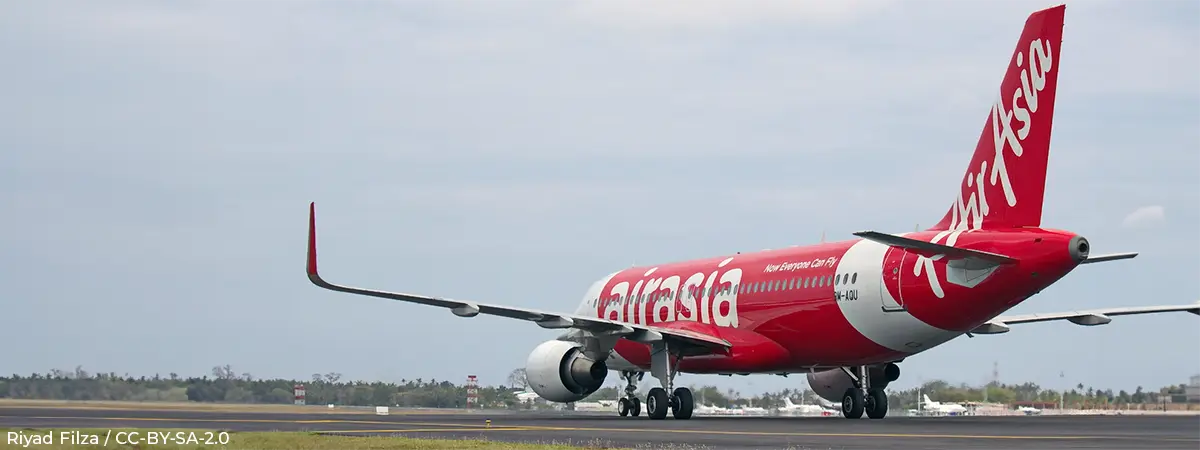Who hasn’t travelled with a low-cost airline? Whether because of the low price or limited availability on other airlines, we’ve surely all bought a low-cost airline ticket at some point. Some loathe this concept of air travel, while others see it as a market niche necessary for the development of aviation and other economic sectors globally.
Without a doubt, low-cost airlines have significantly boosted tourism, particularly in the last few decades. Moreover, tourism has been, and still is, the main catalyst for this air travel market niche.
Low-cost airlines have made air travel more accessible, thus making a huge contribution to the growth of global tourism.
Many airports had experienced slowed growth, but with these new flights, they are now thriving, enriching their surroundings and creating numerous new jobs. Clearly, the connection between tourism and “low-cost” not only includes flights, but also the services available at destinations (hotels, restaurants and bars, shops or other leisure options).
The current boom in tourism, in particular international tourism, would not be conceivable without low-cost flights. For example, a few decades ago, we could not even think about a weekend getaway on the other side of Europe. But we now see planes packed with tourists for whom this is now a habitual way of travelling.
Analysing the boom in low-cost flights, it is clear that accessibility and affordability play key roles, with ticket prices dropping significantly and becoming accessible to more travellers. This has allowed more and more people to travel, both at home and abroad. Low ticket prices mean travelling by plane is no longer an option just for business travellers or people with high purchasing power, but also for families, students and travellers on a limited budget.
The first consequence of this is the expansion of new markets, since lower ticket prices have driven the demand for flights to regions that were previously not as accessible. As mentioned above, the low-cost model has prompted people who would normally not travel by plane to consider air travel as a good option for their holidays and weekend getaways, discovering new places that were previously not an option. Regions receiving few tourists are now being visited by many more. It is quite common nowadays for people to choose their getaway destination according to the price of tickets. This was simply not an option until very recently.
Similarly, from the airlines’ standpoint, this model has allowed them to expand the number of routes and boost the availability and frequency of air travel routes.
Low-cost airlines have opened many new routes to destinations that were not operated by traditional airlines. This has boosted the availability and frequency of air travel routes and provided access to secondary and tertiary destinations. The most immediate consequence has led cities and regions that were not as popular until now to become new popular tourist destinations thanks to direct flights and affordable tickets.
Flight frequency has also increased, with varying fares throughout the day, providing passengers with greater flexibility in terms of schedules and options.
Proof of this is the evident change in traveller behaviour. For example, lower costs have led to a trend where more people take shorter, more frequent flights rather than a single longer journey, which was common a few decades ago. Weekend getaways and last-minute flights have become more common thanks to the flexibility and affordability of low-cost airline tickets.
Passengers can now explore a greater variety of destinations, as well as different cultures and environments. This has led to a diversification of travel preferences and tourist experiences.
The economic impact of this new air travel culture on popular tourist destinations is evident in the increased tourist services and infrastructure development. The rise in tourist numbers has boosted economic growth in many destinations, benefiting specific sectors, such as hospitality, food services, retail and local services. Destinations receiving more and more tourists will also be able to develop additional infrastructure for tourists, creating jobs and business opportunities.
The demand generated by low-cost airlines has driven the expansion and modernisation of many airports, particularly at secondary destinations, leading to greater capacity and efficiency.
As in any developing sector, growth brings a series of challenges and factors that must be strategically managed to mitigate potential adverse effects.
For example, the popularity of some destinations could result in saturation, negatively impacting airport infrastructure in terms of loss of capacity and lower quality of service. Moreover, competition between low-cost airlines and traditional airlines has put pressure on profit margins, posing a risk to the viability of some companies.
Low-cost airlines have undoubtedly created innovative business models and are more agile in incorporating personalised, scalable services for passengers. All this was a matter of need. It would not have been possible without the digitalisation and optimisation of operations, which has increased the burden on traditional companies that are generally larger and slower in decision-making.
Low-cost airlines have made air travel more accessible, thus making a huge contribution to the growth of global tourism. They have boosted the availability and frequency of air travel routes, stimulated new markets and changed the behaviour of travellers. However, their impact also poses challenges that require careful management to ensure tourism’s sustainable, balanced development.



